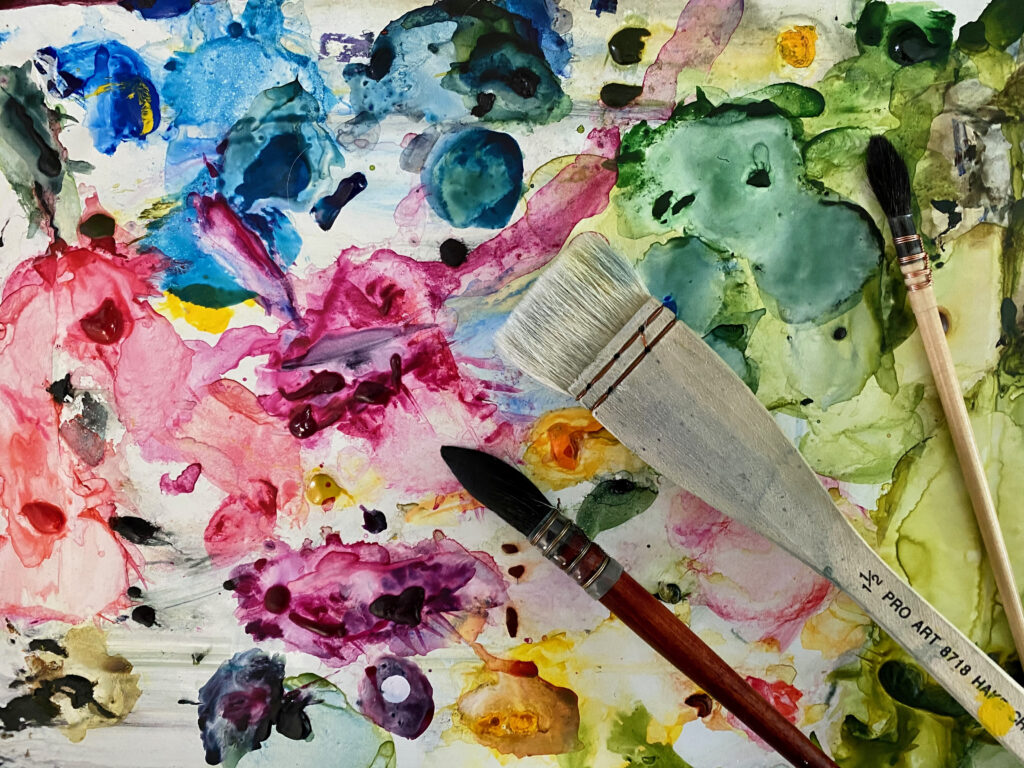I remember being overwhelmed by the huge list of supplies handed to me at my first watercolor class a few years ago. When I priced it out the total cost came in just under $250 and that was after some judicious editing. As my curiosity and passion for watercolor grew, I bought more stuff on weekly trips to Blick Art Supplies in Providence, RI. The Amazon guy started showing up on a weekly basis, which alarmed my supportive but tightwad husband. I had so many brushes that they filled half a dozen ceramic jars on my table. I could not stop. My supply buying frenzy slowed down dramatically when I began participating in weekly outdoor painting sessions in my village. I simply couldn’t haul all those brushes, palettes, paper blocks, paint tubes, etc..in a backpack along with a tripod easel and a camping stool across the local dunes and wetlands! I learned to get by with one block of watercolor paper, a mop brush, a hake brush, a number 8 round and a number 2 rigger.
I go in depth here about why these brushes (and their alternatives) are great to start with when watercolor painting.
I filled a small enamel folding palette with 12 pans of color, a pencil, painter’s tape, a cotton rag, a folding knife, and a plastic bucket for water. A friend of mine used 3 brushes and one of those cheap Prang watercolor sets for a year before she ever stepped foot in Blick or Jerry’s Artarama. So don’t be intimidated by that list on the YouTube tutorial or your first in-person class! Buy what you are comfortable with, check out your fellow classmates’ kits, and build your tool collection slowly. The only caveat I will offer is to buy the best paper you can afford; it will make the most difference in terms of ease of use and final product. Otherwise, enjoy exploring the vast world of watercolor supplies without fear of breaking the bank!
